15 Underrated Scotch Whiskies You Need To Buy
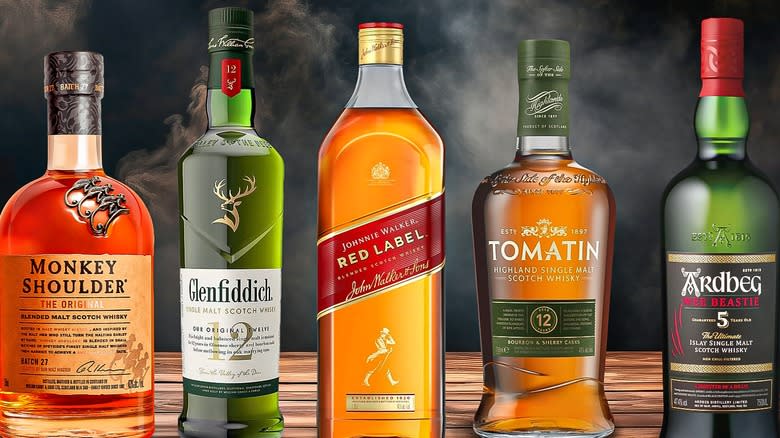
Whether it's music, restaurants, films, or bars, there are always things that don't get the appreciation they deserve, and Scotch is no different. There are several reasons that a whisky may be underrated, with one being that it doesn't have the level of popularity it deserves. While that's a credible reason, we wanted to look beyond just having a list of obscure yet delicious whiskies. We also wanted to include popular expressions that some whisky enthusiasts look down upon for one reason or another.
This list may include popular Scotches you've heard of but not yet tried, while it also hopefully includes some that will be completely new to you. We have personally tried every whisky on this list, and it takes into account not only taste but also value for money and availability. All of these whiskies should be fairly easy to acquire, so you can see this as a checklist and decide for yourself how highly rated they deserve to be.
Read more: The 25 Best Bourbon Brands, Ranked
Johnnie Walker Red Label

It may seem a little curious to include such a popular whisky, but there are some justifiable reasons why this is an underrated Scotch. The Red Label is often overshadowed by its more premium counterparts. Jonnie Walker markets its expressions via colors, with Red being the youngest and cheapest of the lot. The next step up is the Black Label, which receives much more acclaim as an affordable yet delicious blended whisky. We're not pretending that the Red Label is a fantastic Scotch, but it's a versatile and well-balanced blend that delivers a smooth and accessible taste.
Most often used for mixing in cocktails, Red Label is also good enough for casual sipping. That can't be said for many other Scotches in this price range. The nose is a little shallow, but you get some fruits and a hint of smokiness. The palate reveals a pleasant sweetness with touches of vanilla and a subtle warmth. Some may turn their noses up at affordable whisky, but we see blends such as this as a good gateway into the world of Scotch. If you're new to Scotch or are on a budget, you can't go wrong with a bottle of Red Label.
Monkey Shoulder
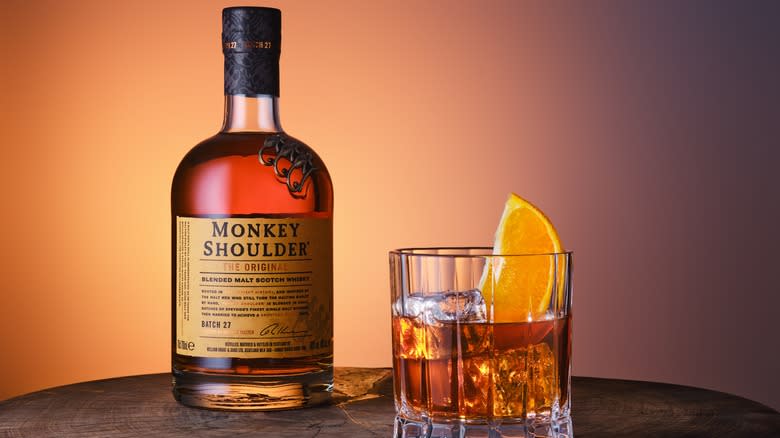
There are a few different types of Scotch whisky. However, many just split them into two main types: single malts and blended whisky. Single malts are generally seen as the better of the two for various reasons. One of them is that blended whisky is usually partly made with grain whisky, which is cheaper to produce and, for most Scotch drinkers, not as nice. However, other blended whiskies, such as Monkey Shoulder, only use single malt whisky to create its blends. This leads us to why Monkey Shoulder is often underrated, and that's because some presume it's a lower-quality whisky because it is blended.
The reality is that Monkey Shoulder tastes much nicer than many other single malts out there. It has a beautiful mix of vanilla and toffee with subtle spice and floral notes upon nosing. The aroma sets the stage for the smooth whisky with a medley of sweet flavors, a touch of fruitiness, malt, and a spicy warmth. The blend of single malts makes it well-balanced and very easy to drink. The quirky name and iconic bottle can give this Scotch a playful feel, but it's a seriously good whisky.
Talisker Skye
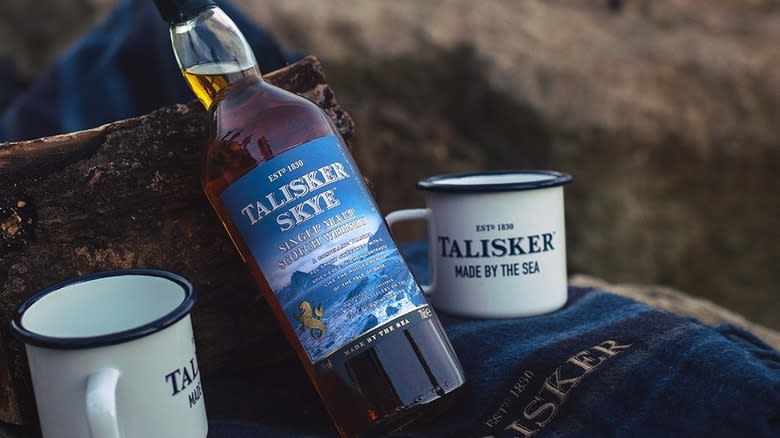
Another common reason that a whisky can be underrated is if it's a NAS Scotch. NAS stands for "no age statement," which means that the distillery doesn't publish how long the spirit has been matured for. However, due to the laws of what is defined as a Scotch, we know that all these whiskies need to be matured for at least three years. There are a few reasons that a distillery won't put an age statement on its whisky. It means the distillery is not under pressure to meet what can be an arbitrary number and can simply bottle the whisky when it's ready, regardless of how old it is.
Talisker Skye is often underrated for this reason. The presumption with NAS whisky is that it will be harsh and immature. A taste of Talisker Skye shows that isn't true. You get plenty of notes of the nose, with the sea breeze and maritime influences of this island whisky being notable. The palate gives you a blend of sweet malt with subtle salinity and smoke. Added to these notes is a fruitiness which contributes to this being a well-rounded and accessible whisky. It's proof that a Scotch doesn't need an age statement to be a great pour.
Lagavulin 8-Year
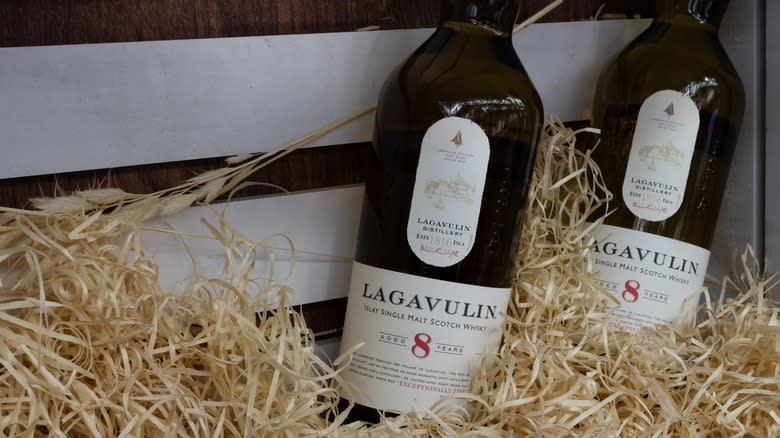
Many distilleries are known for various expressions without one particularly standing out. However, other distilleries are known for having one expression that stands far above its other products. Lagavulin is the latter, as Lagavulin 16-year is known for its incredible taste while being relatively affordable. The attention that the Lagavulin 16-year gets can overshadow some of the distillery's other expressions, such as its 8-year Scotch, a fairly new addition to its core lineup. This Scotch was released as part of its 200-year celebration but became a permanent release.
You get that signature Lagavulin smell on the nose with an intense burst of smoke and the medicinal iodine, but there is some subtle citrus zest, too. The palate unfolds with complexity, with the notes of the nose carrying through and being joined by brine and vanilla. This whisky has a youthful vibrancy, but that can be seen as a positive. The finish is longer than many other 8-year-old whiskies to leave a memorable tasting experience. While Lagavulin's 16-year is a legendary Scotch, its younger sibling deserves plenty of recognition.
Glenfiddich 12-Year
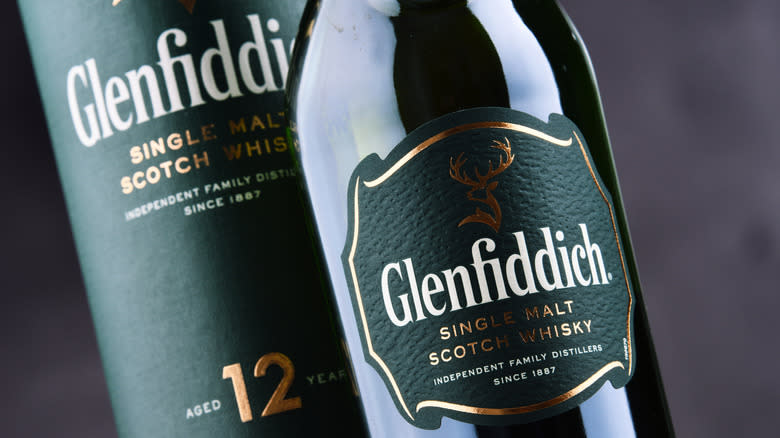
Again, a whisky enthusiast may find it strange that the Glenfiddich 12-year is included in this list due to its popularity. However, it's that very popularity that many people will overlook this as a fine Scotch. We often see it with the likes of songs and films that when something achieves a certain level of popularity, there will always be people who try to play down its success. If you're making your way into learning about whisky, don't let anyone tell you that you should skip this Scotch. It's a cornerstone and deserves recognition for introducing countless enthusiasts to the pleasures of a single malt.
This is a fruiter whisky than any we've looked at so far, and you'll get pear and apple on the nose, along with some floral notes. The palate is sweet, with the most distinctive taste being honey, which sits on a foundation of malt and oak. It has a well-balanced profile that is approachable for newcomers and satisfying for seasoned whisky drinkers. Even though it may not have the exclusivity of some limited editions or the age statement allure of older whiskies, Glenfiddich 12-year is a whisky that deserves its popularity.
Bunnahabhain Stiùireadair
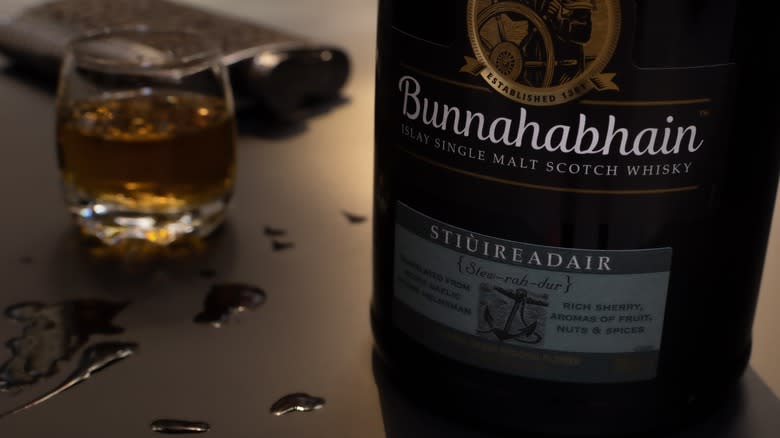
Bunnahabhain Stiùireadair may be underrated because, unless you know Gaelic or are a whisky enthusiast, you probably have no idea how to pronounce it! While it can be difficult, its name is not why Bunnahabhain (Bunn-na-ha-venn) Stiùireadair (stew-rahdur) is on this list. The reason is because of where this whisky is from, the notorious island of Islay. As with the aforementioned Lagavulin 8-year, most whiskies made on this island use peat to dry the malted barley after germination. Peat imparts a distinct flavor profile and smoky quality to the final Scotch many Islay enthusiasts love. In many ways, this can be both an advantage and disadvantage for Bunnahabhain.
It helps it stick out from the crowd, but conversely, it can mean the expressions can be overlooked by those wanting an Islay whisky with the common peated taste. The main aromas with this Scotch are brine, toffee, and a subtle note of dried fruit. Moving to the palate, you'll enjoy a captivating mix of dark chocolate, sherry influence, and gentle smoke, creating a well-balanced and complex flavor profile. Hardcore enthusiasts greatly appreciate Bunnahabhain whisky, but it's important for those newer to Scotch not to overlook this fantastic distillery.
Tomatin 12-Year
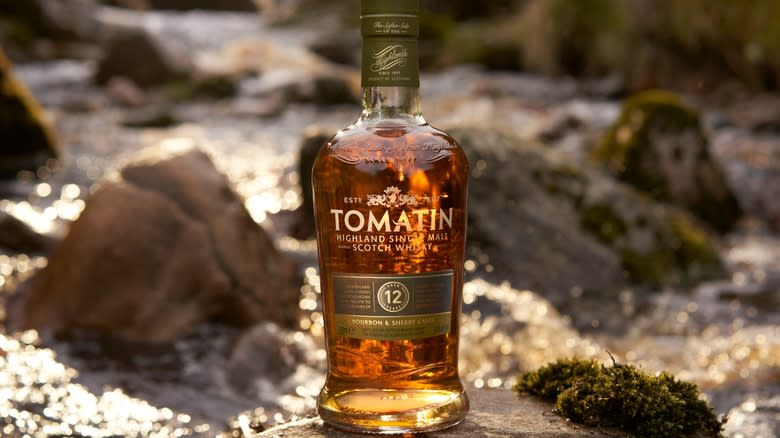
Although you should want to avoid automatically equating lesser-known with underrated, it is also important to give some love to those whiskies that don't get the attention they should receive. If you've already tasted all the expressions on this list, Tomatin 12-year should be the perfect Scotch for you. This Highland single malt offers a superb balance of flavors and a smooth, approachable character. You get a warm collection of orchard fruits, honey, and subtle malt on the nose that draws you into the tasting experience.
The palate unfolds with an impressive interplay of flavors, the most unique being that of ripe apples. It's joined by vanilla and spice to give it an impressive depth of character for a 12-year Scotch. It also strikes a perfect balance between having a youthful vibrancy and the sophistication of a mature whisky. It may not be as widely recognized as some other single malts, yet Tomatin 12-year remains a hidden gem for those who appreciate a well-crafted, smooth Highland whisky.
Kilkerran 12-Year
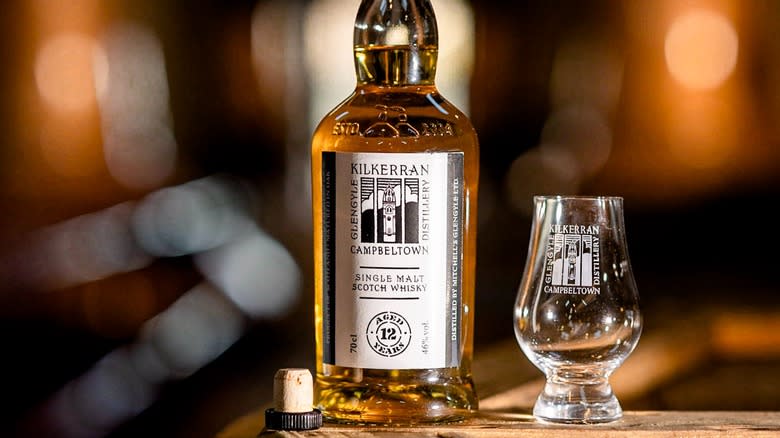
The world of Scotch is littered with distilleries that are sometimes over two centuries old. While new distilleries are rare, they can also be a source of new, fresh perspectives. That's exactly what we get with Kilkerran, which started production in 2004. Due to this young age, it's a distillery that often remains undiscovered by the broader whisky community. It continues to release excellent Scotch whiskies each year, but the 12-year is one of its best-ever expressions and is highly recommended for any Scotch lover looking for something away from the mainstream.
It has a notable nautical influence on the nose and a significant amount of peat smoke. Those are notes you'd commonly get with an island whisky, yet this Scotch comes from the Campbeltown region. Technically a part of the Scottish mainland, the Kintyre peninsula sits on the country's west coast and is exposed to the sea air. Its unique location leads to whiskies with plenty of character, and we see this continuing to the palate, where you get subtle brine, fruits, and malt along with its smokiness. There are currently only three distilleries in the Campbeltown region, and the Kilkerran 12-year is a great place to start if you want to explore this lesser-known corner of the whisky world.
Dewar's 12-Year

Dewar's is well-known for its entry-level blends. It offers a range of blended whisky aimed at the more affordable market. Nothing is wrong with that, but it does mean that its more expensive, higher-aged whiskies can get overlooked. Dewar's 12-year is a perfect example of that, as it offers an impressive balance and smoothness that you may not associate with this type of whisky. Age-statement blends are rarer than single malt counterparts, but Dewar's show why it shouldn't always be that way.
On the nose, you get many of the notes you'd want from an expensive single malt, such as vanilla, dried fruit, citrus, and a subtle touch of oak. It has a well-rounded complexity you may expect from the longer aging process. These aromas continue through to the palate, joined by a spicy warmth that is presented with a velvety mouthfeel. It all adds up to a whisky that is excellent value for money and a big step up from the more famous White Label.
Clynelish 14-Year
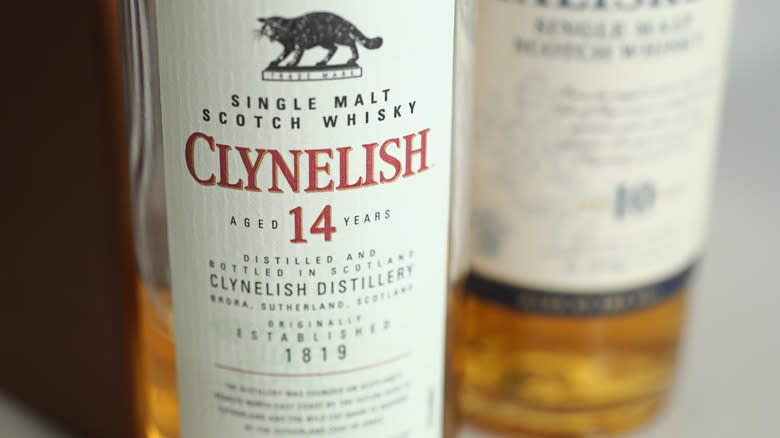
Clynelish is another distillery that gets a lot of love from experienced enthusiasts but not from those who aren't as well-versed in Scotch. Its expressions often fly under the radar and don't get the widespread recognition they probably deserve. Clynelish whisky has a distinctive character, and you can often easily pick it out during a blind tasting, most notably due to its waxy mouthfeel. The best example of what a great Clynelish whisky offers is its 14-year.
The most distinctive notes you'll get on the nose are those of honey and citrus. The aforementioned waxiness is notable on the palate, combined with a range of orchard fruits, a coastal salty influence, and a spicy warmth. This Scotch is pleasantly rich and has an impressive amount of depth. Its lack of widespread popularity is perhaps because it's not marketed as heavily as other Diageo-owned distilleries, but whatever the reason, you shouldn't let the 14-year pass you by.
Ardbeg Wee Beastie
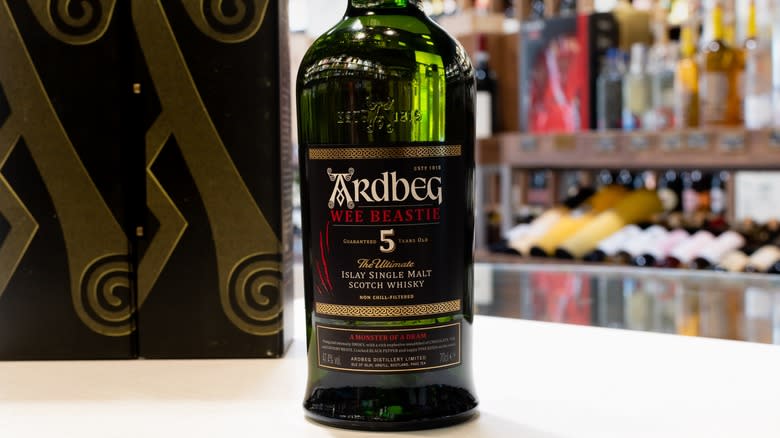
Of all the whiskies on this list, the Ardbeg Wee Beastie probably presents the greatest value for money. For such a youthful whisky, it has an incredible depth of flavor that many older Scotches don't have. Called the "Wee Beastie," Ardbeg takes the unique step of giving this young whisky an age statement as it has been matured for a minimum of 5 years. While it may not boast the same age statement as some of its older siblings, such as the Ardbeg 10-year, Wee Beastie is a powerhouse of peat that deserves recognition for its captivating profile.
That smoke hits you immediately on the nose, and it's joined by many more earthy notes and a hint of medicinal iodine. Its boldness is evident on the palate and is joined by sweeter and brighter tastes, such as vanilla and citrus. There is plenty of pepper on the finish, which is much longer than you'd expect from a 5-year-old whisky. Perhaps what we love most about the Wee Beastie is that it's an excellent entry point for those who want to try a robust island whisky.
Glenmorangie Quinta Ruban 14-Year
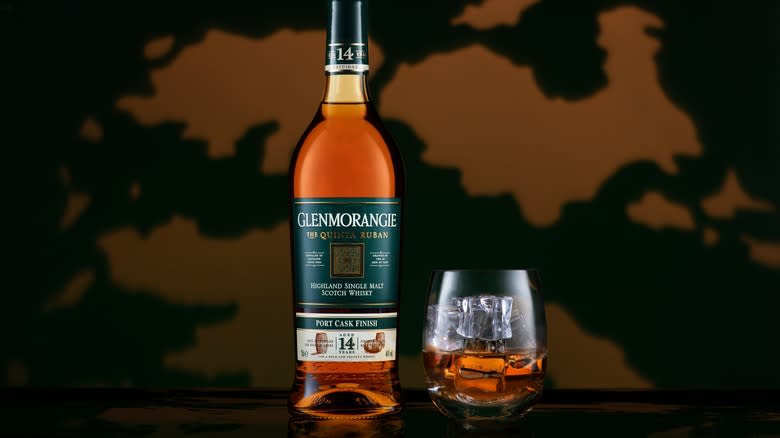
Glenmorangie is a popular distillery. In fact, it has so many expressions that any particular one is in danger of getting lost in the crowd. While that's true, we've included this whisky because of how it has matured. Most whiskies are matured in ex-bourbon casks, with sherry often used for premium Scotches. Other types of pre-seasoned casks can also be used, including rum, wine, beer, and port. The Quinta Ruban 14-year uses the latter as it first uses bourbon casks before it's transferred to port casks from Portugal. If you're unfamiliar with port, this may lead you to overlook this beautiful whisky.
Even if maturation in port casks doesn't sound appealing, you should at least try them. As with the Quinta Ruban, port-matured whiskies often have a luscious mouthfeel and a fantastic interplay of flavors. On the nose, you get a complex aroma of dark chocolate, cherries, and a subtle hint of oak. On the palate, those notes develop into a balanced mix of red berries, toffee, and gentle spice. Glenmorangie Quinta Ruban 14-Year perfectly showcases the art of cask finishing and is worth seeking out if you want to know how port can influence a great Scotch.
Caol Ila 12-Year
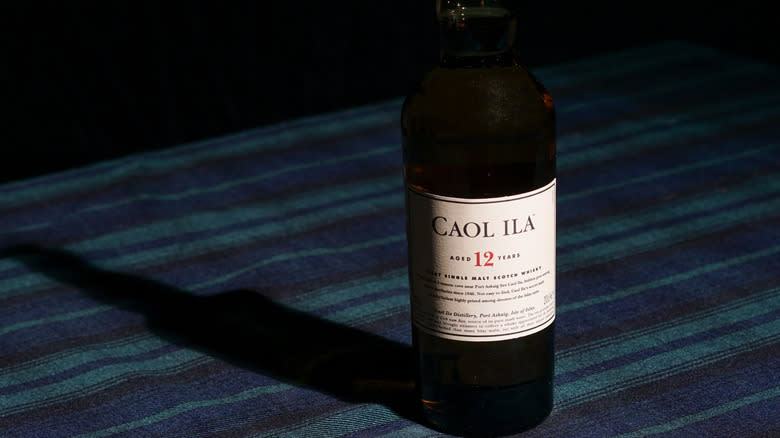
For a small island, Islay has nine active distilleries. Of those, Ardbeg, Lagavulin, and Laphroaig are not only the most well-known but also produce whisky that encapsulates everything you expect from an Islay Scotch with the heavily peated profiles. Despite the revered reputation of Islay whiskies, Caol Ila often remains underrated, overshadowed by more heavily marketed counterparts. However, this 12-year expression deserves attention for its nuanced complexity and well-balanced profile. On the nose here, you get a fantastic mix of smoke, citrus, and a subtle saltiness.
Its position on the rugged Scottish coastline is notably imparted on this Scotch. The earthy notes continue onto the palate but aren't quite as dominant as some of the other distilleries mentioned. It's joined by many sweeter notes, including vanilla, along with a hint of fruits. Overall, this whisky gives you a surprisingly approachable and sophisticated experience. For those who like the peat influence on whisky but can sometimes find it a little too much, you'll find Caol Ila 12-Year strikes the perfect balance.
Laphroaig Quarter Cask
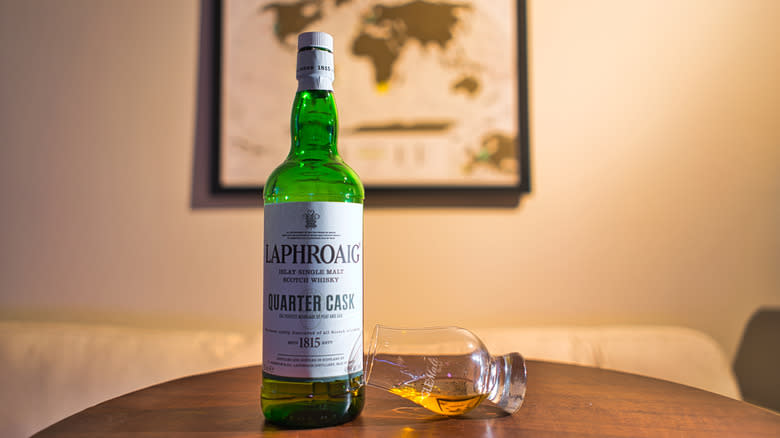
The reason that we've put the Laphroaig Quarter Cask on this list is a mixture of many of the reasons we've looked at above. It has a unique maturation process, the distillery produces a much more famous expression in the form of its 10-year bottle, and it has no age statement. Despite its niche appeal, this expression deserves recognition as a unique and memorable whisky. From the moment the bottle is opened, the unmistakable aroma of Laphroaig's peat smoke, seaweed, and medicinal notes dominate the senses.
The "Quarter Cask" name comes from the smaller casks used for the maturation process, which intensifies the interaction between the whisky and the wood. This leads to a rich and complex flavor profile, with the most dominant notes being brine and vanilla, along with a delightful interplay of sweet and savory notes. The finish is long-lasting, leaving a lingering warmth that shows that you don't need an age statement to have a deep character in your Scotch. The Laphroaig Quarter Cask may not be for the faint of heart, but its boldness and authenticity set it apart from many other young Scotches.
Loch Lomond 12-Year

Loch Lomond is a distillery that struggles to get the recognition it deserves. It seemingly puts a lot of effort into its marketing but doesn't have the same level of popularity as many of the other whisky-makers on this list. It makes the Loch Lomond 12-year an underrated gem in the realm of single malt whiskies. The Highland Scotch unveils a captivating array of tasting notes that showcase the richness of its character. The nose is greeted with a delightful blend of heather, honey, and a subtle touch of more earthy notes.
The palate has a well-balanced combination of orchard fruits, oak, and a touch of butterscotch. The unique combination of straight and swan neck stills no doubt contributes to the layers of flavor that you get from each sip. It's an approachable and affordable whisky with an impressively long finish that will leave you wanting more. Unfortunately, Loch Lomond's 12-year often exists in the shadows of more prominent single malts. However, its understated charm and complexity make it a whisky worthy of exploration.
Read the original article on Tasting Table.
